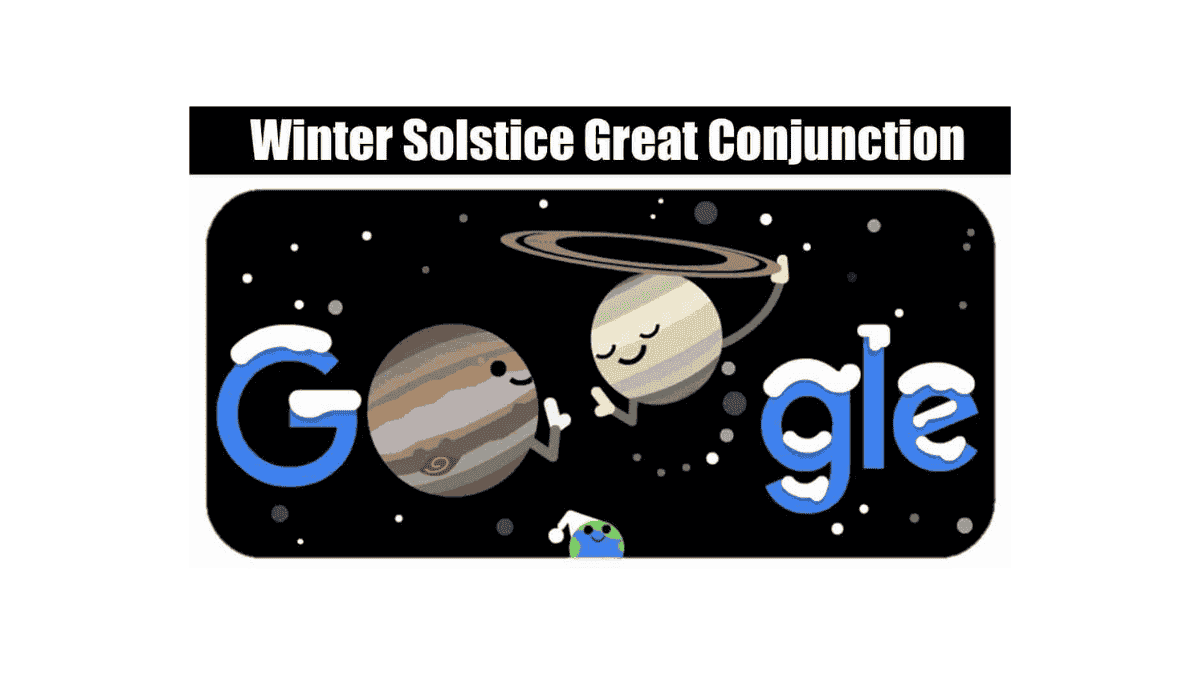Winter Solstice 2020 on Google Doodle and the Great Conjunction with an animated graphic

With an illustrated graphic on December 21, the new Google Doodle celebrates the Winter Solstice and the Great Conjunction. The winter solstice usually happens in the northern hemisphere between December 19 and December 23. Today the animated Google Doodle “celebrates the Northern Hemisphere’s first day of winter as well as this rare double planet sighting- or “Great Conjunction”- which can be viewed from anywhere around the globe!”
In the northern hemisphere, December 21 marks the Winter Solstice which is the shortest day and longest night of the year. In the southern hemisphere, the exact reverse exists. When Jupiter and Saturn overlap in the night sky, the Great Conjunction happens. The ‘Christmas Star of 2020’ is called the ‘Jupiter Saturn Great Conjunction.’
This occurrence will take place, according to NASA, after nearly 400 years after the planets were so close to each other in the atmosphere and almost 800 years since the night when Jupiter and Saturn were associated.
Visibility for the winter solstice in India
According to timeanddate.com, the December 21 Winter Solstice can be seen in India at 03:32 pm. Depending on the environmental conditions, skywatchers in North America, Central America, Europe, Asia, and northern Africa will also experience this winter solstice.
Why is the Christmas Star named the Great Conjunction?
The conjunction is called the Christmas Star since, while the planets tend to be different from each other, they will appear as a big star like the Star of Bethlehem that shone at the birth of Jesus Christ in the eastern sky.
Visibility in India for Great Conjunction
The conjunction can be found in India between 06:30 pm-07:30 pm. Registrations to observe the astronomical phenomena have been opened by Delhi’s Nehru Planetarium. The planetarium has begun skywatching from December 20 to prevent crowding and this will carry on until December 22. Centered on weather conditions, webcasting can also be performed on the planetarium’s Facebook and YouTube pages.


